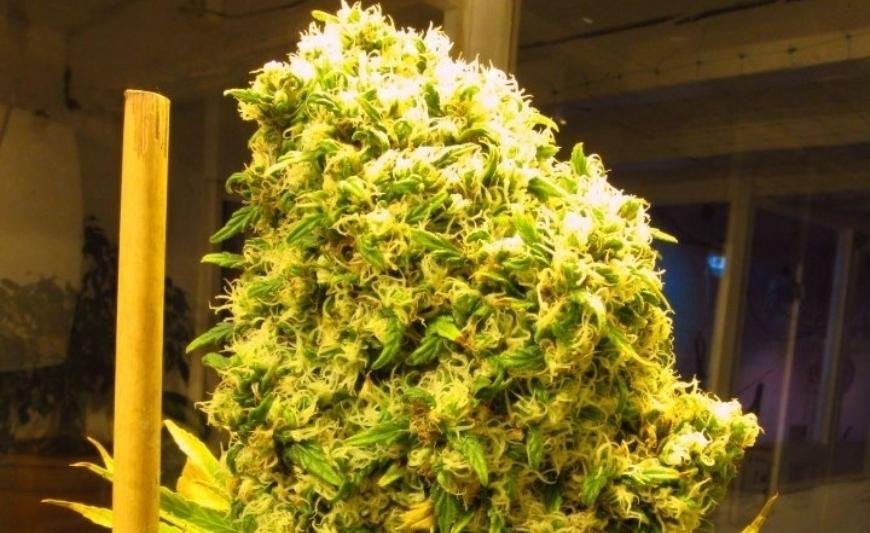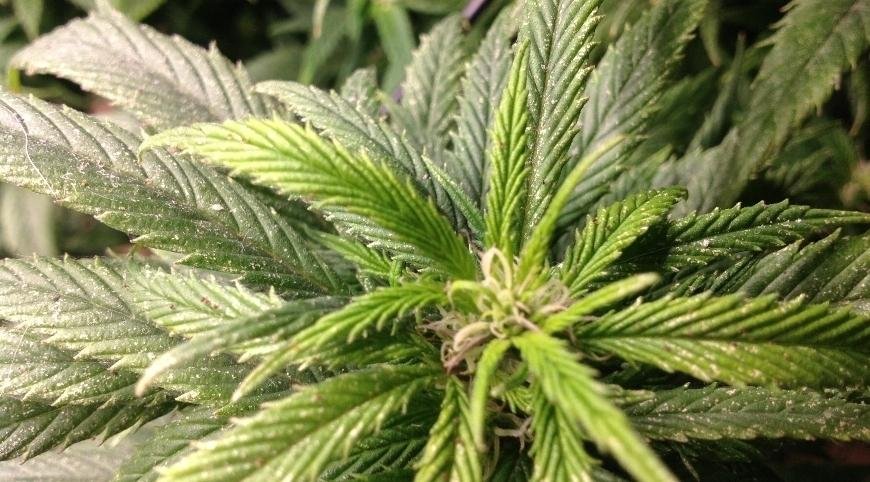Hindu Kush Strain
The Hindu Kush Strain's history, effects, and growing tips. Uncover this potent indica's lineage and unique characteristics today!

A prominent and widely sought-after indica strain, Hindu Kush has a long history of cultivation that extends back to the mountain range between Pakistan and Afghanistan. This purebred Indica is known for its potent effects and unique lineage.
We will delve into the rich history, exploring how it has evolved over time from ancient cultivation practices to modern-day breeding techniques. We'll also discuss the genetics behind this legendary strain, revealing its connection with other popular indica strains in today's market.
Aspiring growers will appreciate our section on cultivating plants, which provides valuable insights on how to achieve optimal growth conditions for these particular indica strains. In addition, we'll examine THC and CBD levels found within Hindu Kush cannabis plants, along with other essential cannabinoids responsible for their distinct effects.
Finally, prepare yourself for an exploration of both flavor profiles and the various sensations experienced when consuming this renowned strain. By understanding all aspects of the Hindu Kush strain – from growing tips to expected outcomes – you'll be well-equipped to enjoy one of nature's most cherished gifts fully.
Table of Contents:
- Overview of Hindu Kush Strain
- History of Hindu Kush Strain
- Genetics and Lineage of Hindu Kush Strain
- Growing Hindu Kush Strain
- THC, CBD and Other Cannabinoid Levels in Hindu Kush Strain
- Effects of Hindu Kush Strain
- Flavor of Hindu Kush Strain
- Conclusion
Overview of Hindu Kush Strain
The Hindu Kush strain, a pure indica marijuana variety, is known for its unique characteristics and highlights that make it stand out among other cannabis strains. This legendary strain has been cherished by recreational users and growers alike due to its potent effects, distinct flavor profile, and impressive trichome production.
These plants are typically short and bushy with broad dark green leaves. The flowers possess a frosty look due to the plentiful trichomes that encase them, these glands of sticky resin not only give Hindu Kush its strength but also are essential in producing hash. These sticky resin glands not only contribute to the strain's potency but also play a significant role in hash production.
The aroma is often described as earthy with hints of sandalwood and pine. As the buds are broken apart or ground up, these scents become more pronounced along with subtle notes of spice or incense. Many users find this complex fragrance both soothing and inviting.
It has gained widespread popularity among cannabis enthusiasts for its potent indica effects, making it an ideal choice for those seeking relaxation. Its ability to induce a deep sense of calmness coupled with its sedative properties make it particularly suitable for nighttime use or when unwinding after a long day. Additionally, Its high resin production has made it a favorite among hash makers worldwide.
We will delve deeper into the history, genetics, cultivation techniques, cannabinoid content, effects and flavors of this remarkable strain so that you can fully appreciate what makes it truly stand out in the world of cannabis.
It is a unique indica-dominant hybrid that offers many benefits to users. With its history dating back centuries, this strain has been used for recreational purposes alike. Moving on, let's take a look at the History of Hindu Kush Strain and how it has evolved over time.
History of Hindu Kush Strain
The Hindu Kush strain, a pure indica variety, has a rich and fascinating history that dates back thousands of years. This legendary cannabis strain originated in the harsh mountain range between Pakistan and Afghanistan, where it adapted to survive extreme conditions. The eponymous mountain chain, which spans the area of approximately 500 miles.
The use of cannabis in this area can be traced back to ancient times when it was utilized for its medicinal properties as well as for spiritual rituals. Some historians believe that the Scythian tribes were among the first people to cultivate and consume cannabis in these mountains around 2000 BCE. They are known to have used it during burial ceremonies and other religious practices.
Hindu Kush became particularly famous due to its role in traditional hashish production within Central Asia. The plant's thick coat of crystal trichomes made it an ideal candidate for creating high-quality hashish using traditional methods such as hand-rolling or sieving through fine screens. As trade routes expanded throughout Asia, Europe, and Africa, Hindu Kush gained popularity not only for its potent effects but also for its unique flavor profile.
In the 1960s and '70s, a series of overland routes known as the "Hippie Trail" emerged, connecting Europe to South Asia and introducing Western explorers to Hindu Kush. During their journeys, these travelers discovered this strain and brought its seeds back to North America and Europe. This led to the cultivation of this pure indica strain in Western countries, where it quickly gained popularity among cannabis enthusiasts.
Over time, breeders have used it as a genetic foundation for creating new hybrid strains with various characteristics. However, the original landrace remains highly sought after by both recreational users and medical patients due to its unique effects and flavors that can be traced back thousands of years.
The Hindu Kush, a landrace from the mountains of Afghanistan and Pakistan, is an ancient strain that has been around for ages. With its unique genetics and lineage, this strain has become a popular choice for recreational users looking to explore new highs.
Genetics and Lineage of Hindu Kush Strain
It boasts a rich genetic history that has been carefully preserved over time. As a pure indica, it is derived from the landrace strains native to the mountainous region between Pakistan and Afghanistan. The exact lineage of this potent strain remains somewhat mysterious, but its unique characteristics have made it highly sought after by breeders and cannabis enthusiasts alike.
The term "landrace" refers to a naturally occurring variety of cannabis that has adapted to its specific environment over generations. These plants are typically more resilient than their hybrid counterparts due to their long-standing exposure to local conditions. In the case of Hindu Kush, its landrace origins can be traced back thousands of years in the Hindu Kush mountain range. This harsh climate shaped the plant's growth patterns and potency levels, making it an ideal candidate for hash production.
Hindu Kush is an ancient strain, and it has been a key contributor to many modern breeding efforts. Many popular indica-dominant hybrids owe their existence at least partially to this ancient powerhouse. Some notable examples include:
- Master Kush: A cross between two different Hindu Kush phenotypes with earthy flavors and powerful relaxation effects.
- OG Kush: Although not directly descended from Hindu Kush itself, OG kush likely contains some genetics from Afghan or Pakistani indicas related to Hindu Kush. This strain is known for its strong euphoric effects and distinct piney aroma.
- Bubba Kush: A legendary indica-dominant hybrid with a sweet, earthy flavor profile and deeply relaxing effects that are often used to combat insomnia.
Over time, the Hindu Kush strain has developed several phenotypes due to both natural variation and selective breeding efforts. Some of these variations include:
- Purple Hindu Kush: Known for its striking purple hues, this phenotype offers a fruity taste alongside potent relaxation properties.
- Hindu Skunk: The result of crossing Hindu Kush with Skunk #1, this hybrid boasts an uplifting high coupled with pungent aromas reminiscent of its skunky parentage.
- Afghan Kush: While not technically a direct descendant of the original landrace strain, Afghan kush shares many similarities in terms of growth patterns and cannabinoid content thanks to their shared mountainous origins.
In summary, the genetics and lineage behind the iconic strain have played an essential role in shaping modern cannabis culture. Its enduring popularity can be attributed not only to its unique characteristics but also to the countless hybrids it has helped create over generations of careful cultivation.

Growing Hindu Kush Strain
As a pure indica strain, is an excellent choice for both novice and experienced growers alike. With its hardy nature and resilience to harsh climates, this strain can thrive in various environments. We will discuss the best practices for growing Hindu Kush strains successfully.
It can be grown both indoors and outdoors. Though it is native to Afghanistan and Pakistan's mountainous regions, it tends to thrive better in cooler climates with reduced humidity. If you live in a region with hot summers or high humidity levels, consider growing your plants indoors using climate control systems to mimic their natural environment.
The ideal soil for growing should be well-draining and rich in organic matter. A mix of coco coir, perlite or vermiculite combined with composted materials such as worm castings or bat guano provides an optimal medium for healthy root development. You may also add mycorrhizal fungi into the soil mix to enhance nutrient uptake by your plants.
It's crucial to monitor your plants' nutrient levels regularly and adjust as needed. Overfeeding can lead to nutrient burn or other issues that may affect the overall quality of your harvest.
Hindu Kush requires ample light exposure during its growth cycle. For an optimal growth cycle, HID lights such as MH and HPS are recommended when cultivating Hindu Kush indoors; however, LED grow lights offer a more energy-efficient alternative with comparable yields. Alternatively, you can opt for energy-efficient LED grow lights which have been proven effective in producing excellent yields while consuming less electricity.
To maximize yield potential and ensure even canopy development, consider implementing training techniques such as Low-Stress Training (LST), Screen of Green (ScrOG) or Sea of Green (SOG). These methods encourage horizontal growth patterns allowing more light penetration into lower branches resulting in increased bud production throughout the entire plant structure.
Keeping the grow environment tidy is essential for thwarting bug infestations. Regularly inspect your Hindu Kush plants for signs of pests like spider mites, aphids or whiteflies. If detected early enough, these pests can be controlled using organic solutions such as neem oil or insecticidal soap sprays before resorting to chemical pesticides if necessary.
Incorporating these best practices into your Hindu Kush cultivation process will ensure a bountiful harvest of potent, resinous buds that you can enjoy and share with friends.
The growing requires patience, dedication and a good understanding of the plant's needs. By monitoring THC, CBD and other cannabinoid levels in your plants you can ensure that you are getting the best possible results from this unique strain.
THC, CBD and Other Cannabinoid Levels in Hindu Kush Strain
The Hindu Kush strain is known for its potency and unique cannabinoid profile. This strain has a reputation for providing strong effects that are ideal for those looking to relax. In this section, we will explore the cannabinoid composition of Hindu Kush, including its THC and CBD content.
Hindu Kush boasts an impressive tetrahydrocannabinol (THC) content ranging from 15% to as high as 20%. The high THC levels contribute significantly to the potent psychoactive effects experienced by users of this strain. As with any cannabis variety, individual plants may have slightly different percentages depending on growing conditions and genetic factors.
In contrast to its relatively high THC levels, cannabidiol (CBD), another well-known cannabinoid found in cannabis plants is present at much lower concentrations. Typically measuring around 0.1% - 0.5%, these low CBD levels mean that users seeking significant therapeutic benefits from CBD should consider other strains with higher concentrations of this non-psychoactive compound.
Besides THC and CBD, there are numerous other cannabinoids present within the resinous trichomes of the Hindu Kush plant that can influence its overall effect profile when consumed. Some notable examples include:
- Cannabigerol (CBG): CBG, a non-intoxicating cannabinoid with potential anti-inflammatory, antibacterial and neuroprotective properties, is usually present in Hindu Kush strains at around 1%. CBG levels in Hindu Kush strains are typically around 1%.
- Cannabinol (CBN): Another non-psychoactive compound found in small amounts within the Hindu Kush strain. CBN is known for its sedative effects and may contribute to the overall relaxing nature of this indica variety.
- Tetrahydrocannabivarin (THCV): A lesser-known cannabinoid with a similar molecular structure to THC but distinct psychoactive effects. THCV can be found in trace amounts within some Hindu Kush plants and may help modulate appetite or provide other therapeutic benefits when consumed.
In summary, the high THC content of the Hindu Kush strain makes it a potent choice for those seeking strong psychoactive effects from their cannabis consumption. However, users looking for significant CBD levels should consider exploring other strains better suited to meet their needs. Additionally, keep in mind that individual plants will vary slightly in terms of exact cannabinoid percentages due to factors such as growing conditions and genetics.
The THC, CBD and other cannabinoid levels of the Hindu Kush strain are incredibly high, making it a powerful choice for recreational users. Its effects can vary greatly depending on these levels; therefore, understanding what you're consuming is essential when using this strain.
Effects of Hindu Kush Strain
The effects are primarily characterized by its potent indica properties, making it an ideal choice for those seeking relaxation and relief from various ailments. In this part, we'll take a look at how the Hindu Kush strain affects people.The Hindu Kush strain is known to provide a deep sense of physical relaxation. Users often report feeling a heavy body sensation that can help alleviate muscle tension.
Beyond its physical benefits, Hindu Kush also offers significant mental effects that can be beneficial for users experiencing stress or anxiety. Furthermore, some users find that consuming Hindu Kush enhances their mood by providing a gentle euphoria that lifts spirits without causing overwhelming psychoactive experiences.
- Studies have shown that certain cannabis strains can stimulate creativity in some individuals.
- Hindu Kush has been noted for sparking creative ideas among artists and writers who use it as part of their creative process.
- This effect varies from person-to-person; however, many people enjoy using this strain during brainstorming sessions or when working on artistic projects at home.
It is important to be mindful of the potential side effects associated with Hindu Kush use. Some common side effects reported by users of Hindu Kush include:
- Dry mouth and eyes
- Dizziness or lightheadedness
- Increased appetite (also known as "the munchies")
In rare cases, some individuals may experience heightened anxiety or paranoia when consuming high-THC strains like Hindu Kush. It is crucial for new users to start with a low dose and gradually increase their intake while monitoring their reactions.
In summary, the Hindu Kush strain offers a wide range of physical and mental benefits that make it an attractive option for recreational and medicinal use alike. Its potent indica properties provide relaxation, pain relief, stress reduction, and even creativity enhancement in some cases. However, as always, it's important to consume responsibly and pay attention to individual reactions when trying this powerful strain.
The effects of hindu kush strain are vast and varied, with users reporting both relaxing and energizing sensations. The flavour of Hindu Kush is described as earthy-sweet, delivering a distinctive taste that can be appreciated by recreational users alike.

Flavor of Hindu Kush Strain
The flavor profile is one that will delight both novice and experienced cannabis enthusiasts alike. This pure indica strain provides an unmistakable sensory experience, with its unique blend of earthy, sweet and spicy flavors.
The aroma is often described as being reminiscent of sandalwood with hints of pine. The distinct aroma is derived from its resinous trichomes containing terpenes such as myrcene, pinene, and caryophyllene. These compounds not only contribute to the overall fragrance but also play a role in enhancing the therapeutic effects associated with this particular strain. For further information on the terpenes and their effects on a strain's taste and therapeutic benefits, read our article entitled 'Understanding Terpenes in Cannabis'.
Upon inhaling the smoke or vapor produced by burning or vaping flowers, users are greeted by an initial burst of sweetness followed by subtle earthy undertones. As you exhale, expect a slight spiciness reminiscent of pepper or cloves to linger on your palate - an attribute that many find enjoyable when consuming this classic indica variety.
- Sweetness: The natural sugars found within Hindu Kush's resin glands give it a pleasant sweetness that balances well against its more pungent characteristics.
- Earthiness: A hallmark trait among many indica-dominant strains like Hindu Kush is their rich soil-like taste which imparts a sense of groundedness and connection to nature.
- Spiciness: The spicy notes present in Hindu Kush are likely due to the presence of caryophyllene, a terpene known for its peppery aroma and potential anti-inflammatory properties.
In addition to these primary flavors, some users may also detect hints of citrus or floral undertones. These nuances can vary depending on factors such as growing conditions, curing methods, and individual palates. No matter what your tastes are, it's undeniable that Hindu Kush provides a distinct taste sensation unlike any other cannabis strain out there now.
Conclusion
Overall, the Hindu Kush strain is a classic indica that has been around for centuries. Its origins can be traced back to the mountains of Afghanistan and Pakistan. The hardy, easy-to-cultivate Hindu Kush plant has become a favourite among growers of all levels of expertise.






































































































































